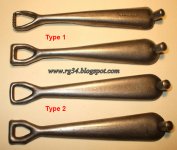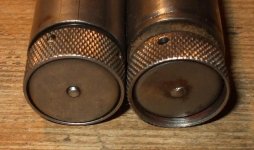So I was bored this morning and decided to "classify" some of my kits that I consider "as built". In doing so, I referenced the (often visited) RG34 site http://rg34.blogspot.com.es/ by our member "dot". I realized that there really isn't any type of classification system as far as types of chains, spoons, and oilers. Does anyone actually have a classification system they use? I kinda ad hoc'd from his site using his pics to make my own. One thing I noticed, as with anything else there are sub types of each type just to make things more confusing, but don't consider them another type. For example, there are Type 2 chains with both zinc and steel barrels, other chains with mixed, etc. Also, for Type 3 oilers you have welded and plain types. When writing these things down I would just add a note to each one. Anyway, I've made notes on his photos to show what I did - these kits all start to run together after a while, so I just feel like they need some kind of order.
So Slash is working on a book, and "dot" indicates he is as well. Do you guys have some kind of system you use in your notes for this?
Have I gone insane? I feel like it.
So Slash is working on a book, and "dot" indicates he is as well. Do you guys have some kind of system you use in your notes for this?
Have I gone insane? I feel like it.















